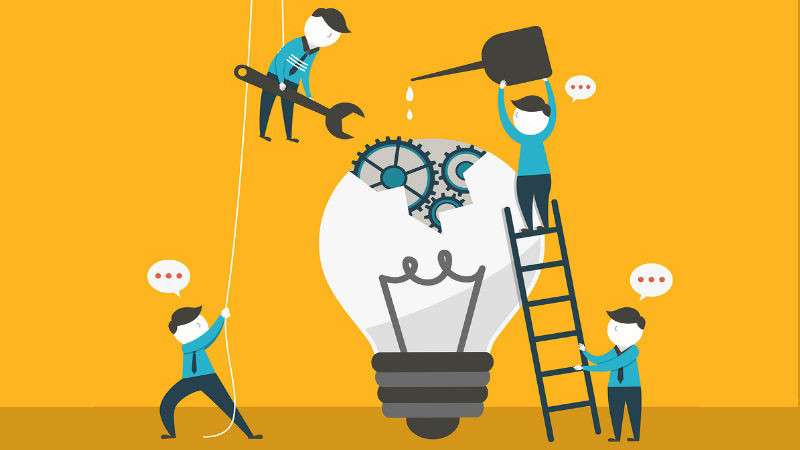Mature or not mature? That is the question.
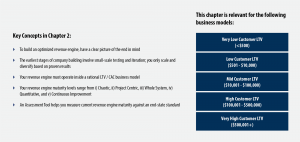
As a tech company CEO, caught in the throes of crisis de jour, it’s often hard to devote any time to a thoughtful, sequential build-out of the revenue engine. You just need more sales now: nothing else matters. But smart tech startup CEOs figure out how to progress steadily through clearly defined stages of maturity while simultaneously delivering the day-to-day unit sales, financial results, and product development outcomes necessary to get funded and to scale.
When you bring your first product to market, you as CEO may well be the totality of your revenue engine. For the Very Low LTV business model, you are the sole conductor of the endless series of A/B tests seeking online traction (what Scott Weiss from Andreessen Horowitz famously called “fruit fly experiments”).
If you have a Mid, High or Very High LTV business model, you’re the one reaching out to alpha and beta prospects. You’re testing your pitch — validating your product — searching for confirmation that a customer will buy. Even after the first three account executives are hired, you may sell for a while with no marketing department. Then you hire an email marketer, or a growth marketer. Then you hire a sales development rep. Everything is nascent, and in continuous flux.
Early on, smart company building follows a stage-based pattern that multiple experts have sought to define. In his book “Four Steps to the Epiphany,” [1] Steve Blank posited four stages: customer discovery, customer validation, customer creation, and company building. Blank’s work focused on the need for a methodical validation of key hypotheses in order to move from stage to stage. Tien Tzuo, in a seminal blog “Climbing the Mountain,” [2] defined six stages in revenue based terms: prove the idea = $1M, prove the product = $3M, prove the market = $10M, prove the business model = $30M, prove the vision = $100M, and prove the industry = $300M+. Tzuo called stage-to-stage journeys “switchbacks,” each of which demands a big shift in the CEO’s leadership approach. Finally, Bruce Cleveland and the team at Wildcat Ventures have developed the “Traction Gap Framework,” [3] articulating four early-phase growth stages: Initial Product Release (IPR), Minimum Viable Product (MVP), Minimum Viable Repeatability (MVR), and Minimum Viable Traction (MVT). In this framework, the focus is on the requirements necessary to secure the next stage of funding.
Each of these approaches adds nuance to the same fundamental point. In the beginning, company building requires the thoughtful development of core hypotheses, the testing of them via small-scale experiments, and an executional management approach characterized by flexibility and rapid iteration. It is only after the emergence of repeatable success that you begin to scale.
Using Wildcat’s Traction Gap Framework then, we can characterize the stages as follows:
IPR:
- You have beta customers
- You seek customer validation metrics to confirm you have MVP
- The founding team comprises the revenue team
- Proof of MVP creates funding
MVP:
- You’ve built a pared down version of a product that customers will buy
- You have a handful of customers
- Founding team still comprises the revenue team
- Proof of MVR creates more funding
MVR:
- You’ve built a small revenue team (perhaps 2–3 sales reps), have created 1.0 versions of your ideal customer profile, value proposition and sales deck, and have sold a small but steadily growing list of customers
- You have repeatability, and as you scale you begin to gain increasing traction
- Proof of MVT creates more funding
MVT:
- You have begun to implement the people, tools, workflows and metrics necessary to drive consistent customer and revenue growth
- Customer acquisition is consistent, and retention is solid and improving
- Your unit economics are sound
- You are steadily scaling customers and revenue
- You gain the funding necessary to hit the gas
As you gain traction, the game begins to change. Rapid iteration makes way for an orderly build-out. At each of stage of growth, progress begets funding, and funding begets an expanding team. Your revenue engine builds and diversifies. You add a product marketing function. A growth marketing function. You introduce sales development reps and account execs. The customer success team is created. People, tools and workflows come together in a grand design. As your revenue engine grows, it becomes more complex and, all too often, unwieldy.
At this point it becomes important to gauge your progress against a standard.
As you leave IPR and MVP and enter into the MVR stage, it’s time for your revenue engine architecture to standardize and solidify. Everything becomes more planned out and methodical. From MVR forward, you begin the discipline of regularly assessing the maturity of your revenue engine at the component level. These assessments are critical. They enable you to clarify weak points and prioritize projects.
The Carnegie Mellon University’s Capability Maturity Model [4] is a useful framework at this stage. It has five maturity levels:
- Chaotic: workflows unpredictable, poorly controlled and reactive
- Project Centric: broken workflows fixed one at a time; often reactive
- Whole System: workflows linked end to end; proactive approach
- Quantitative: workflows measured and controlled
- Continuous improvement: ongoing, data driven fine-tuning
In the previous chapter, Revenue Engine Overview, I dove into the four foundational layers and the six “bow tie” components of the revenue engine framework:
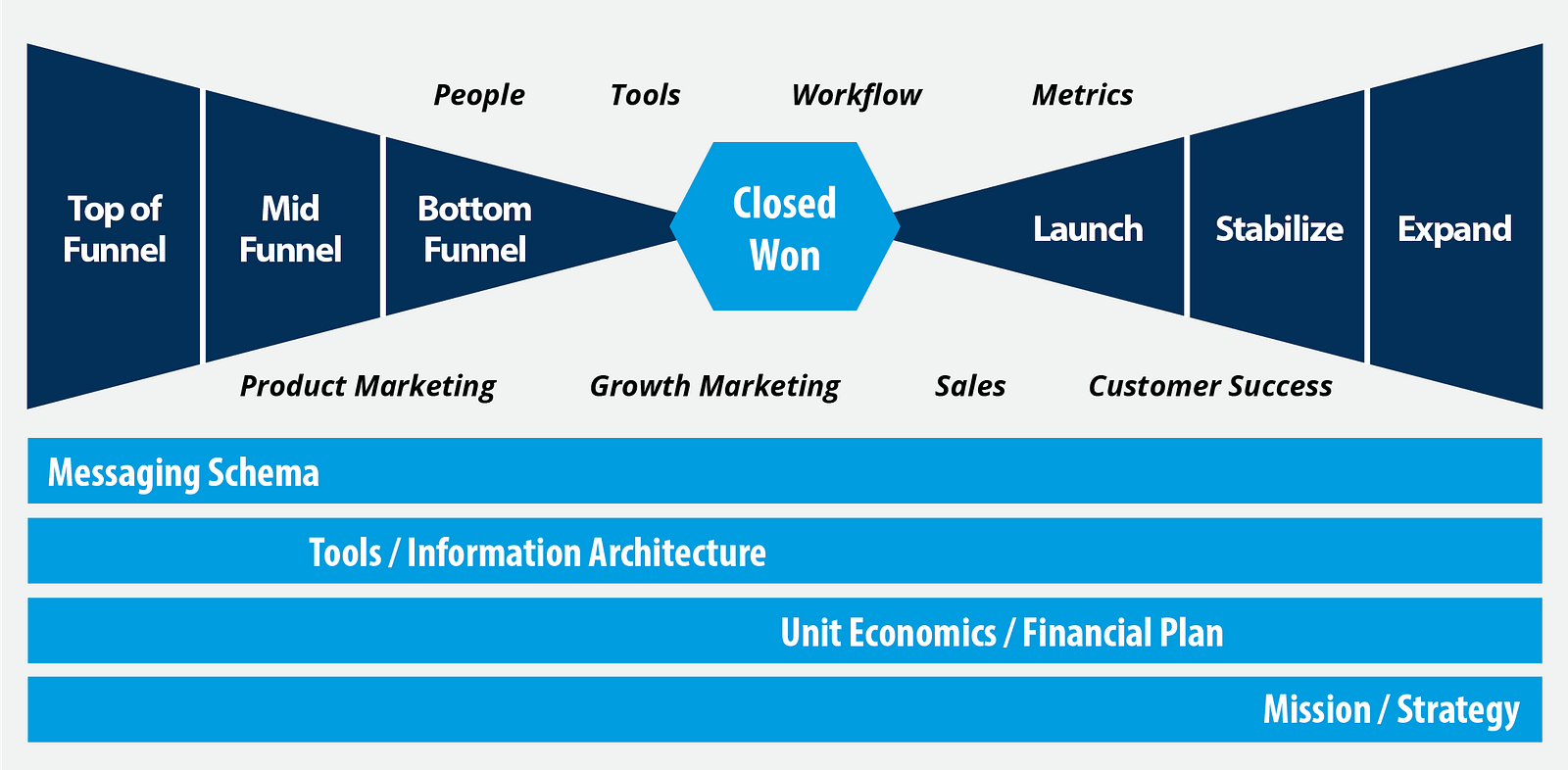
The key is to assess the maturity of each component of the revenue engine, both in the foundational layers and along the bow tie, and act on the assessment to continuously improve. A company that has done this well over a number of years is Eventbrite. It has achieved stage 5 maturity in many of the components in its revenue engine.
Eventbrite is the leading global ticketing platform, and serves customers from SMB to Enterprise across major verticals from music events to conferences. Kevin Hartz is co-founder and CEO. Chris Aker, the company’s disciplined and hard-charging VP Sales, has worked closely with his Finance and Marketing partners to build a tight prospect and customer engagement workflow.
The foundational layers of Eventbrite’s revenue engine are both strategically sound and operationally fit and trim. Customer segmentation features four major verticals (music, consumer festivals, endurance events, and conferences), each with sub-verticals. In turn, these sub-verticals are each broken out by SMB, Mid Market, and Enterprise. Across the bow tie (the prospect and customer journey), all workflows have been designed for efficiency and to optimize customer engagement. Metrics track each step, and the data is used by teams to continuously improve. Tools further enhance these workflows. Eventbrite’s tools stack is tied together by a tight information architecture.
Three sales teams (SMB, Mid Market and Enterprise) exist for each of the four major verticals (i.e., a total of 12 sales teams), and there are over 50 permutations of pitch decks and integrated marketing campaigns to connect uniquely with the buyer personas in all sub-verticals.
Clear performance standards have been established for every stage of the prospect and customer journey and for all roles. Playbooks have been developed to support training and enablement of new hires. People are supported to achieve their performance requirements, but everyone is held accountable for meeting them.
Workflows have been integrated end to end and instrumented for metrics. These metrics are used by teams to continuously improve. In short, Eventbrite’s revenue engine is a whole system that is fast approaching stage 5 maturity.
If you are at or beyond the MVR stage, your company’s journey towards stage 5 maturity can commence in earnest. It begins with a diagnostic assessment. Take a moment to answer the following questions with a 1–5 rating, with 5 being fully optimized:
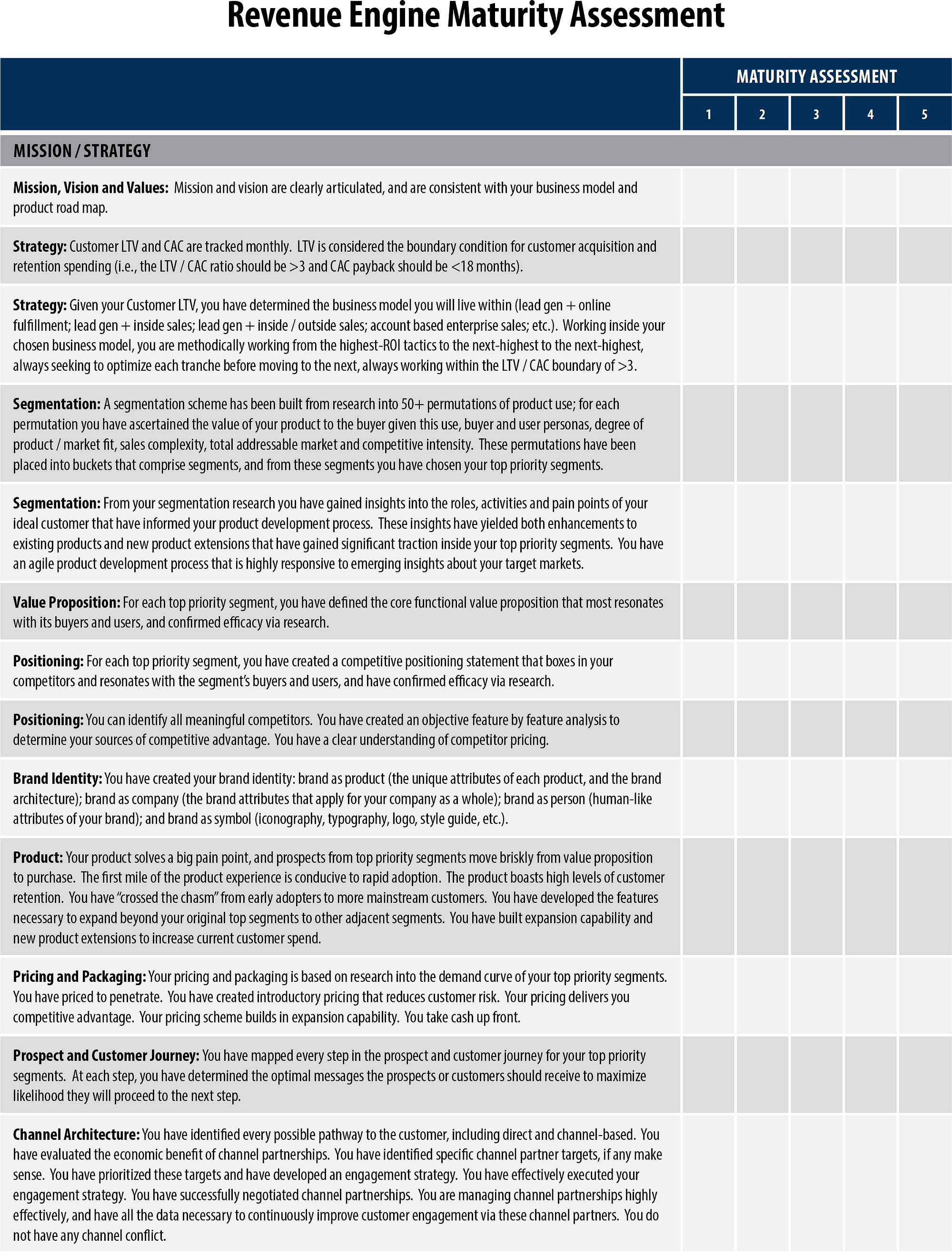
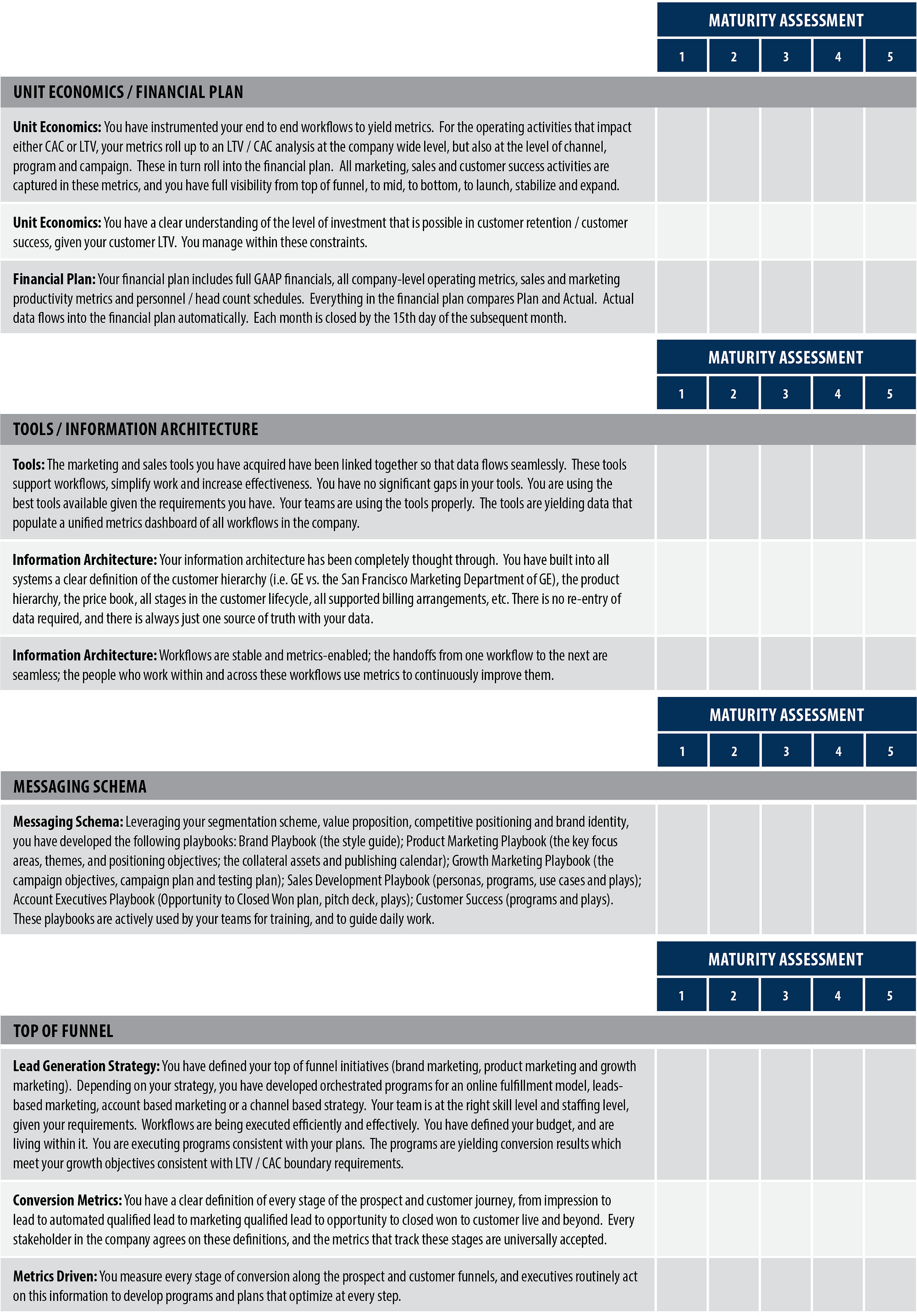
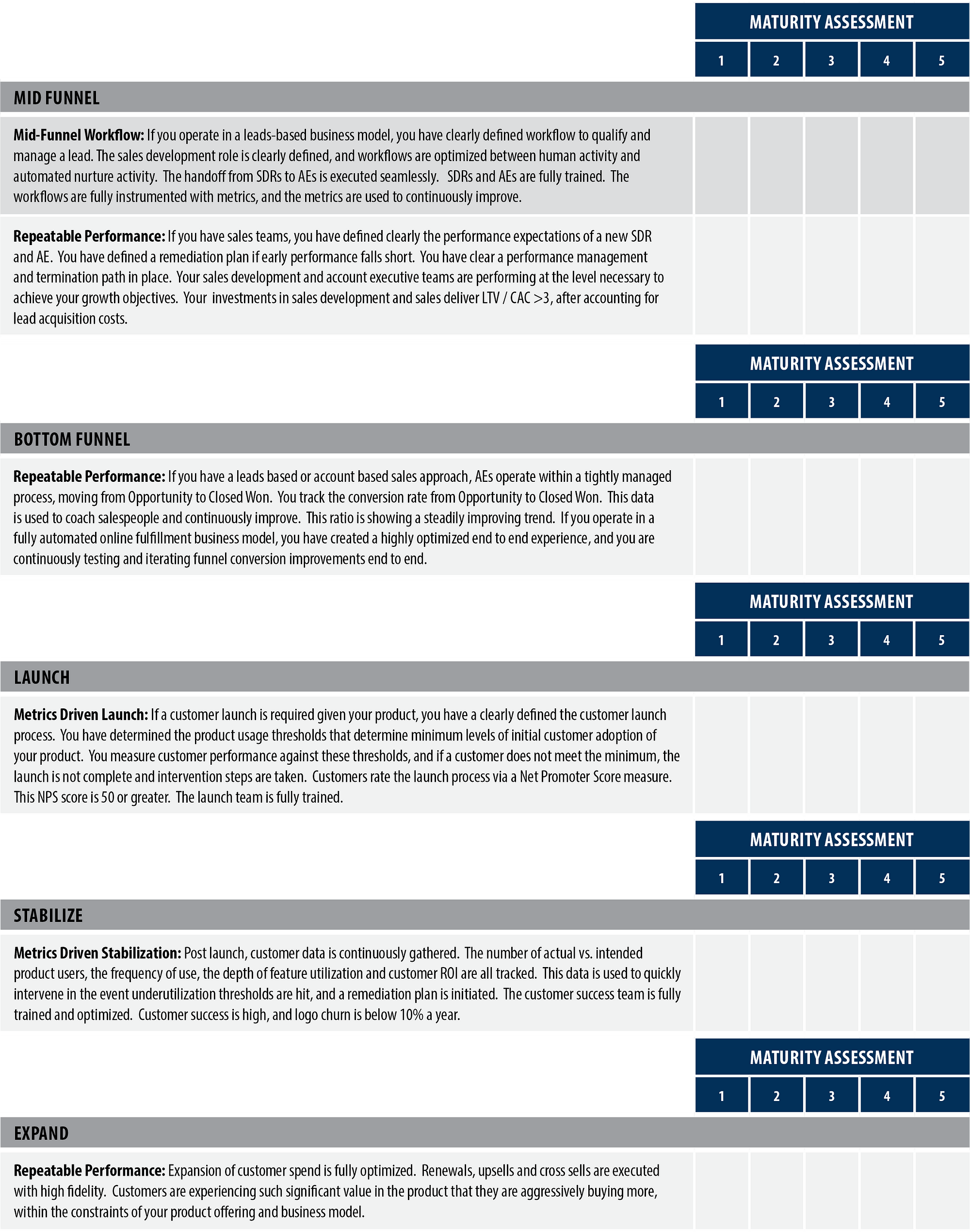
The answers to these questions should have caused you to think deeply about your revenue engine’s current state. Do you show mostly 4’s and 5’s? If so, your revenue engine is well on its way to stage 5 maturity. If not, then perhaps this exercise has helped you define the areas you fall short, and to prioritize where you want to focus next. A helpful next step is to “force rank” your lowest ratings based on the urgency to fix; this will help with project prioritization.
Your maturity assessment and implications can be summarized as follows:

The maturity of your overall revenue engine is a reflection of the maturity of your components. If your foundational layers are not mature, the basic building blocks of your business need work: segmentation scheme, value proposition, positioning, brand identity, product, pricing and packaging, unit economics, messaging schema and so forth. If one or more of the “bow tie” components (top, mid and bottom funnel; launch, stabilize, and expand) are less mature, you have bottlenecks to address.
Projects to strengthen foundational layers tend to be harder, bigger and longer; the effects tend to be back-end loaded but very significant. Projects to address bow tie bottlenecks tend to be smaller, more targeted and faster, with more immediate but more incremental effects.
Moving Up the Maturity Scale
To build your revenue engine into a Porsche takes significant effort. Progress is achieved first by a clear current state assessment, then clarity of vision, then smart prioritization, and finally by hard, detail-oriented project work.
While bow tie optimization work is important, great CEOs make a point to carve out management time to chip away at foundational layer projects. Because they’re hard, they’re easy to de-prioritize. But it’s from the foundational layers that the greatest leverage ultimately emerges.
For too many companies, the tyranny of the urgent continuously steals the necessary time and focus away from engine building. These companies often fail to maximize their potential. It takes sustained CEO-level discipline to build, maintain and continuously optimize a Porsche engine.
Commit!
_________________
- Steve Blank, “Four Steps to the Epiphany,” 2013
- Tien Tzuo, “Climbing the Mountain,” blog published on Index Ventures website
- “The Traction Gap Framework,” Wildcat Ventures; white paper posted on wildcat.vc (June 2016)
- Carnegie Mellon Capability Maturity Model, as initially developed in the 1989 book Managing the Software Process by Watts Humphrey

